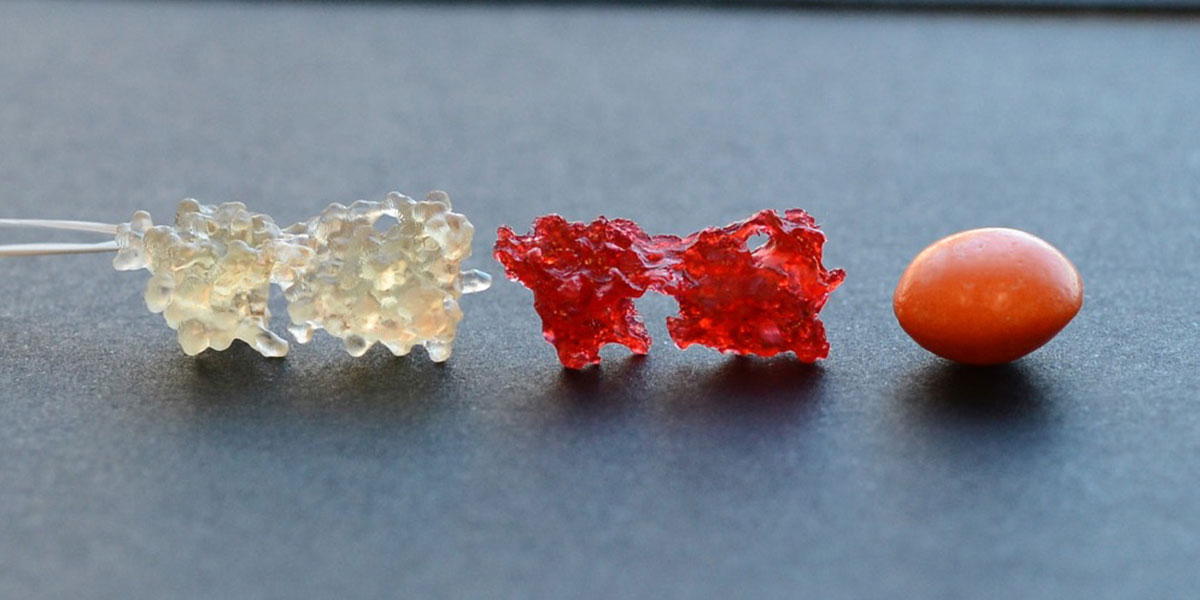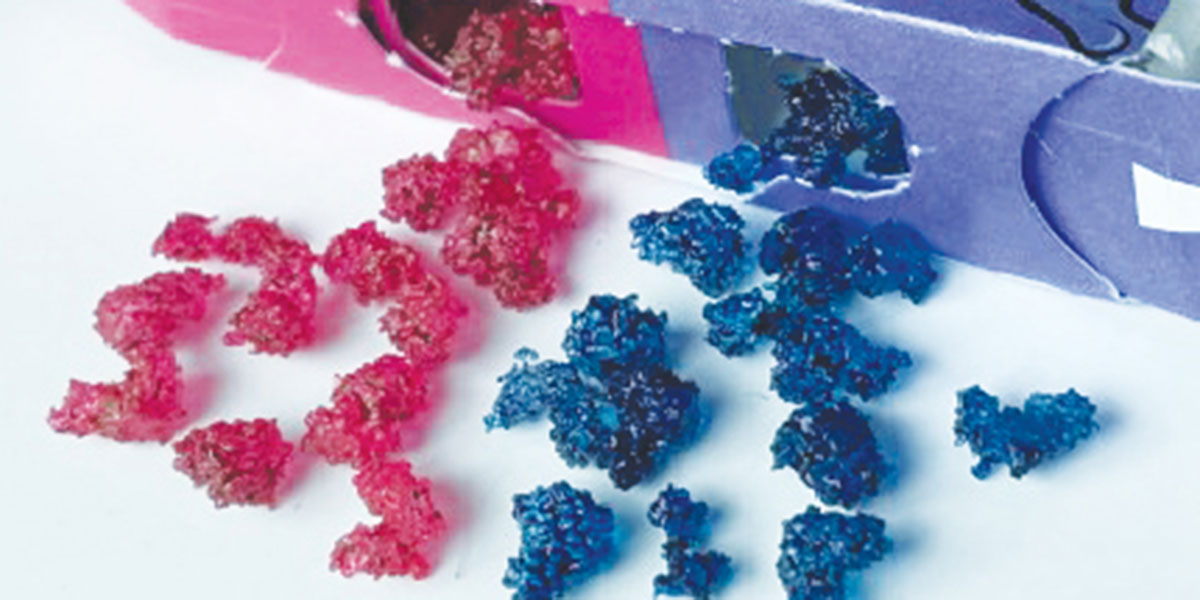Baylor research could make STEM education more accessible to the blind & visually impaired

When it comes to teaching STEM, instructors and students alike rely heavily on viewing images and physical models. But what about students with blindness or visual impairments — how are they to learn these important aspects of the field?
Baylor researchers may have found an answer.
Earlier this month, a Baylor-led study published in the journal Science Advances shared new research that could solve this issue with an unlikely treat: candy. Dr. Bryan Shaw, professor of chemistry and biochemistry, and other Baylor faculty found that millimeter-scale gelatin models (like gummy bears; pictured above) can improve the visualization of 3D shapes via the tongue and lips.
“Your tongue is your finest tactile sensor — about twice as sensitive as the finger tips — and it is also a hydrostat, similar to an octopus arm. It can wiggle into grooves that your fingers won’t touch,” explains Shaw. “Nobody had thought to use the tongue or lips in tactile learning. So, we made very small, high-resolution 3D models to see if they could be visualized by mouth.”
The experiment — tested on both college and grade-school students — worked. Asked to identify proteins with first their fingertips, then their mouths, an astonishing 86% of participants were able to do so. What’s more, 41% were more likely to remember a protein’s structure by mouth versus sight or touch.

“This methodology could be applied to images and models of anything — cells, organelles, 3D surfaces in math, 3D pieces of art — any 3D rendering. It’s not limited to STEM, but useful for humanities too,” says Baylor doctoral candidate Katelyn Baumer, lead author of the study.
The Baylor-led breakthrough — inspired by Shaw’s son, Noah, an aspiring scientist who lost one of his eyes to a retinoblastoma before his first birthday — has quickly attracted a lot of attention, including from such media outlets as Smithsonian Magazine, Nerdist and Gizmodo.
“I hope this research helps raise public awareness about these problems,” says Shaw. “The exclusion of blind kids in STEM is coming to an end.”
Sic ’em, Dr. Shaw and Baylor researchers!

